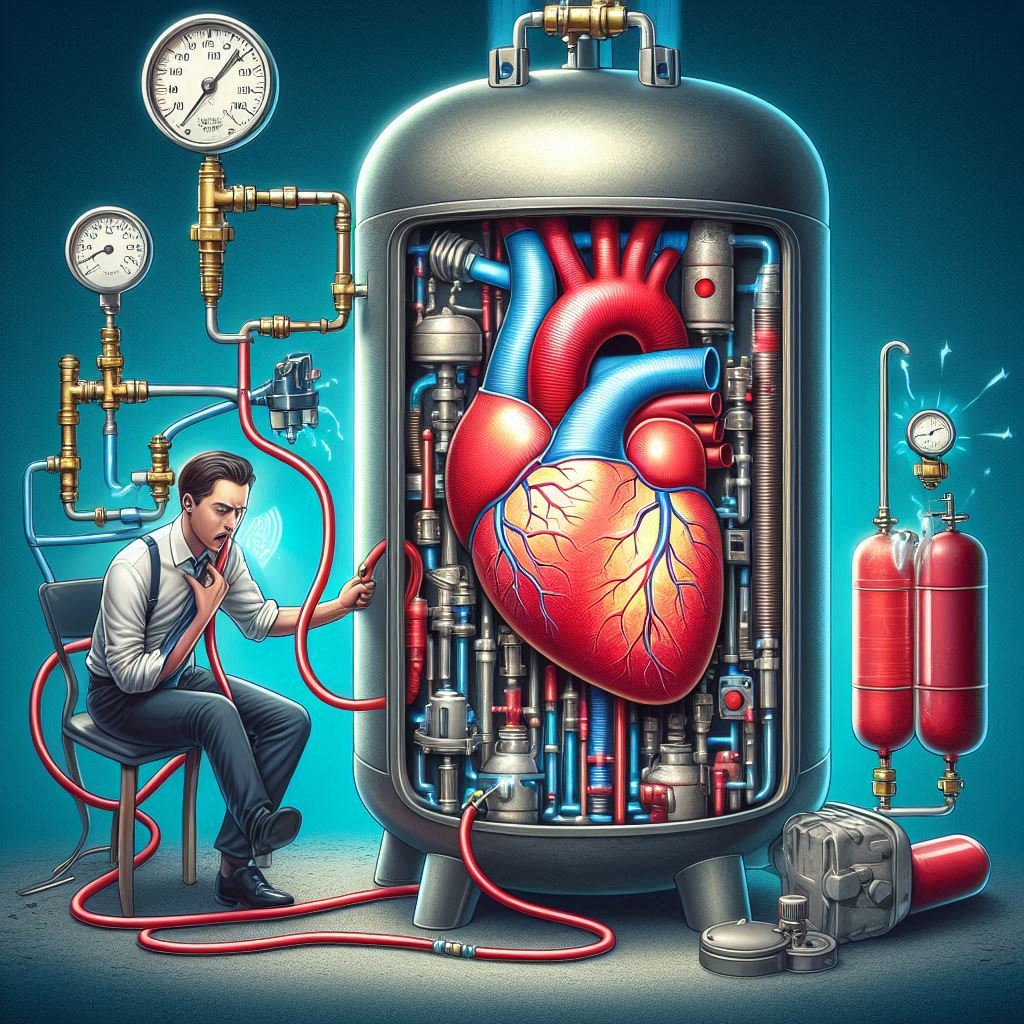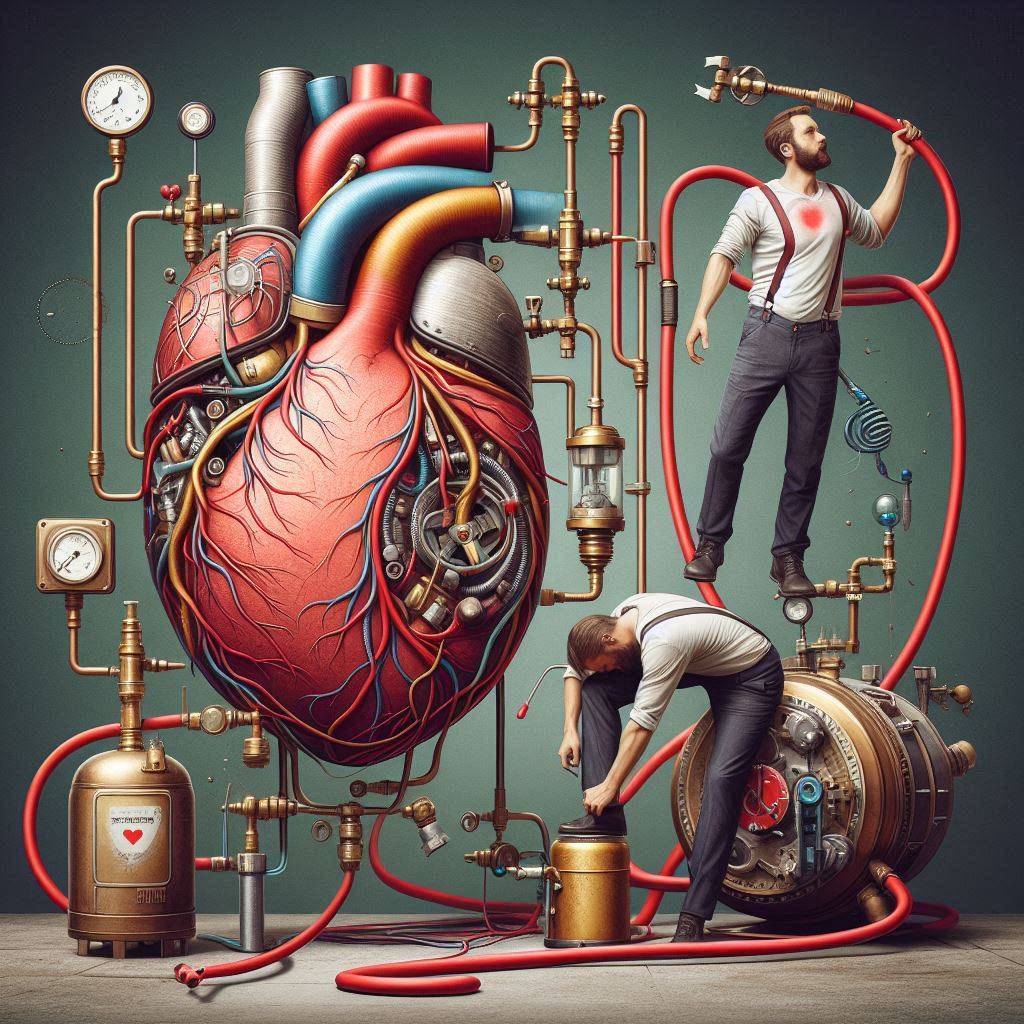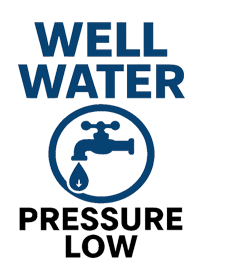Imagine the pressure tank as the heart of your well water system—pumping life and rhythm through the pipes, keeping everything flowing smoothly. The bladder inside the tank is like a cushion, absorbing pressure and making sure the water moves consistently, like a well-rehearsed orchestra. But when the bladder fails, the music stops, and well water pressure low becomes a dissonant note in an otherwise perfect tune.

Bladder failure isn’t always immediately obvious, but over time, the symptoms become more apparent. The signs are subtle at first—like a whisper, then louder, like an alarm bell ringing in the background. Let’s explore the symptoms of pressure tank bladder failure and the reasons why it might be causing your system to fall out of sync.
Common Symptoms of Pressure Tank Bladder Failure
1. Frequent Cycling of the Pump
When the bladder inside the pressure tank begins to fail, the pump works overtime. Imagine trying to run a marathon without a break—eventually, exhaustion sets in. As the bladder loses its ability to absorb pressure, the pump starts cycling on and off more frequently. The pressure tank is no longer acting as a buffer, forcing the pump to kick in too often. This results in well water pressure low during periods of high demand.
2. Sudden and Inconsistent Pressure Drops
One of the first signs of bladder failure is the unpredictable fluctuation of water pressure. If you notice sudden drops in pressure, as though someone is turning off the faucet without warning, the bladder could be losing its capacity to maintain pressure. It’s like driving a car with a deflated tire—everything feels fine until you hit a bump, and suddenly, it’s much harder to move forward.
3. Water Hammer or Banging Noises
A telltale sign of a pressure tank bladder problem is the presence of water hammer, or loud banging noises in the pipes. This happens when the bladder fails to cushion the pressure, causing water to move erratically through the system. The result is a jarring sound in the pipes, like the sudden slam of a door that wasn’t meant to be shut. This is often a direct result of well water pressure low or fluctuations caused by bladder failure.
4. Shorter Run Times for the Pump
Because the bladder can no longer store and release pressure, the pump might only run for short bursts instead of maintaining a consistent flow. When the bladder’s ability to cushion pressure weakens, the system becomes inefficient. It’s like filling a bucket with a leaky hole—the water never stays where it should be, causing the pump to short cycle and well water pressure low.

5. Visible Waterlogged Tank
If the pressure tank is visibly waterlogged—appearing swollen or overly full—it could indicate that the bladder has failed and is no longer holding air. The tank may seem unusually heavy, like a sponge that has absorbed too much water. This visual symptom is often the first clue that something isn’t quite right with the bladder inside.
Solutions for Pressure Tank Bladder Failure
1. Drain and Recharge the Tank
If the bladder hasn’t fully failed, it might simply be waterlogged. You can drain the tank and recharge it with air. This is akin to refilling a balloon that’s lost some of its air. However, this solution only works if the bladder has not been irreparably damaged.
2. Replace the Bladder or Tank
If the bladder has failed completely, the only solution may be to replace it. This is similar to replacing a worn-out shock absorber in a car—if the part can no longer function as intended, it’s time to swap it out. Depending on the model, the bladder may be replaceable, but sometimes the entire tank will need to be replaced to restore proper pressure.
3. Install a New Pressure Switch
If the bladder failure has caused erratic pressure changes, the pressure switch might also be faulty. Replacing the pressure switch helps restore smooth water flow, like resetting the rhythm of a drumbeat.
Objections & Answers
Objection 1: “Why does the bladder fail in the first place? Isn’t it a durable part?”
Answer: The bladder can fail over time due to a variety of factors: constant wear and tear, improper air pressure in the tank, or corrosion. Just as tires lose their grip after miles of use, the bladder wears down with constant pressure cycles. Maintaining proper air pressure and performing regular inspections can help extend its lifespan.
Objection 2: “If my tank looks fine, how can I tell if the bladder is failing?”
Answer: Even if the tank looks visually intact, you can still experience symptoms of bladder failure. The frequent cycling of the pump, sudden pressure drops, or water hammer noises are all signs of internal issues. If you notice these symptoms, it’s time for a more thorough inspection, like listening for a faint engine knock in a car.
Objection 3: “Can’t I just add more air to the tank to fix the problem?”
Answer: If the bladder has failed, simply adding air won’t restore its function. Adding air may temporarily mask the problem, but it won’t address the underlying issue. It’s like putting a bandage on a leaking pipe—it may slow things down, but it won’t solve the root cause.
Objection 4: “Is replacing the bladder or tank difficult? Do I need a professional?”
Answer: Replacing the bladder or pressure tank isn’t necessarily difficult, but it can be labor-intensive, depending on your experience and the type of well system you have. If you’re unsure about performing the replacement yourself, it’s best to call a professional to avoid further complications. Think of it like fixing a car engine—you may be able to do it yourself, but professional help ensures everything runs smoothly.
The Rewards of Solving Bladder Failure
Restored Pressure Stability – No more erratic drops in pressure or pump cycling.
Extended Equipment Life – Properly maintaining or replacing the bladder ensures your well system runs efficiently for years to come.
Reduced System Wear – Preventing constant cycling helps reduce wear on the pump and pressure system.
Peace of Mind – Knowing that your well system is functioning properly, without the stress of fluctuating water pressure.
The Heartbeat of Your Water System
A pressure tank bladder failure is like a heart arrhythmia in your water system. When it falters, well water pressure low disrupts the flow, making everything feel uneven and unpredictable. But with prompt diagnosis and careful attention to the tank’s health, you can restore your system’s rhythm, bringing back the steady, reliable water flow that your home depends on.
